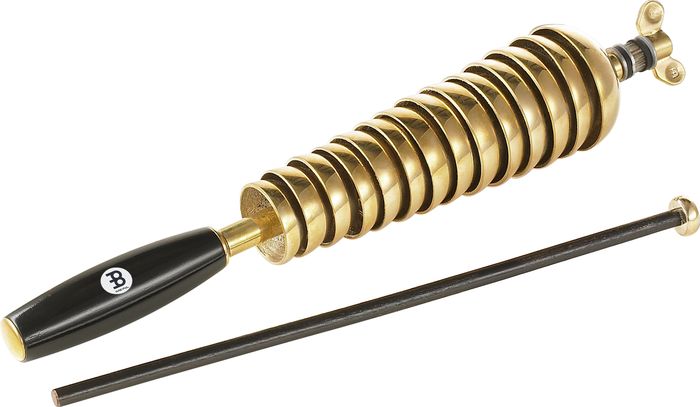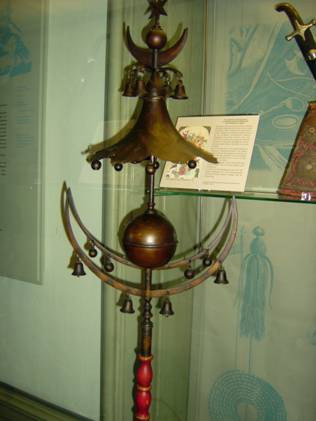How to Play the Bell Tree
Evelyn Glennie Bell Tree Solo
Evelyn Glennie improvision on the Aluphone Chromatic Bell Tree "Emilio Grand"
A bell tree can produce a glissando by striking and sliding down the bells with a metal rod (similar to a triangle beater), a glockenspiel mallet, or a xylophone mallet. When a glissando is played, the inexactness of the order of pitch is unnoticeable; the glissando just sounds fuller. Random or relatively pitched notes can also be played on a bell tree. The bell tree is often used to accentuate the start or end of passages of music with bright shimmering effects, adding complexity to the music.
Turkish Cresent
The instrument, as it is know today, was created in the 1950's by the sound effects expert Carrol Bratman and its sound is now commonplace in many genres of popular music.
http://en.wikipedia.org/wiki/Bell_tree
http://www.music.vt.edu/musicdictionary/textb/Belltree.html
http://awesomeinstruments.blogspot.com/2011/09/dobani-24-carved-rosewood-brass-bell.html
http://en.wikipedia.org/wiki/Bell_tree
http://www.music.vt.edu/musicdictionary/textb/Belltree.html
http://awesomeinstruments.blogspot.com/2011/09/dobani-24-carved-rosewood-brass-bell.html


